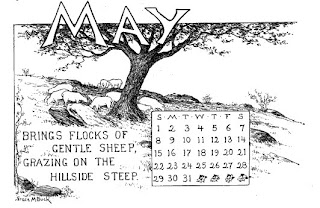 get a proper moisture balance. Thankfully, this soap has given my hair a good moisture balance without having to use a conditioner, and it's convenient as an all-in-one product for body and hair. It had a minor drying effect on my aging winter skin when I first used it, but my skin seemed to adapt to it after about two weeks. It has a reputation for being good for acne and rash prone skin. Again, I think it's the moisture balance and gentle thorough cleaning.
get a proper moisture balance. Thankfully, this soap has given my hair a good moisture balance without having to use a conditioner, and it's convenient as an all-in-one product for body and hair. It had a minor drying effect on my aging winter skin when I first used it, but my skin seemed to adapt to it after about two weeks. It has a reputation for being good for acne and rash prone skin. Again, I think it's the moisture balance and gentle thorough cleaning.It took some getting used to because it is unscented and smells a little different - a bit smoky. The smell does not linger on the hair or skin. The lather is fabulous, and it takes only a small amount to wash your body and hair. I never put it under the water, just use my wet hands to form a lather. It is a soft milled soft, so will dissolve quickly and get soft if left wet. I store the soap on a raised rubber soap mat (outside the shower stall) to let it dry properly between use. I don't bother cutting the soap into pieces. The one pound bar fits on a soap mat just fine.
To style my hair, I now use a little pure raw unrefined Shea butter
 as a solid and is unscented. I scoop a little out with a tongue depressor, melt it between my fingers and hands(melts at body temperature), and scrunch my hair with it. Surprisingly, it is not heavy or greasy and can be use sparingly as a curl/style shaper. In small amounts, I can get my natural curls to keep together rather than frizz, and the style stays in place without looking unnaturally stiff. If I scrunch from underneath, I can get big hair with lots of volume that stays. It just looks and acts healthy. I've put more of it in my hair for deep conditioning, and it washes out well.
as a solid and is unscented. I scoop a little out with a tongue depressor, melt it between my fingers and hands(melts at body temperature), and scrunch my hair with it. Surprisingly, it is not heavy or greasy and can be use sparingly as a curl/style shaper. In small amounts, I can get my natural curls to keep together rather than frizz, and the style stays in place without looking unnaturally stiff. If I scrunch from underneath, I can get big hair with lots of volume that stays. It just looks and acts healthy. I've put more of it in my hair for deep conditioning, and it washes out well.In the winter, I used the raw unrefined Shea butter on my face with great results - no blemishes, and it made my skin soft. It's too heavy for me in the summer, but great around the eyes for wrinkles. Because it's an all natural gentle vegetable product, I use it on the children as well.
 Because a little goes a long way, both the African black soap and Shea butter lasts a very long time. This place sent me good quality fair trade raw African black soap($14.00) and 14 ounces of unrefined Shea butter in a jar($12.00) . I thought the prices had risen, but I must have purchased the sample sizes, which are really quite large! I purchased these in the winter, and I've still got about 3/4 of the soap left and around 80% of the Shea butter left. I think mine was from Ghana, but they currently have these items from Togo, a less economically advantaged country to the west of
Because a little goes a long way, both the African black soap and Shea butter lasts a very long time. This place sent me good quality fair trade raw African black soap($14.00) and 14 ounces of unrefined Shea butter in a jar($12.00) . I thought the prices had risen, but I must have purchased the sample sizes, which are really quite large! I purchased these in the winter, and I've still got about 3/4 of the soap left and around 80% of the Shea butter left. I think mine was from Ghana, but they currently have these items from Togo, a less economically advantaged country to the west of Ghana.
Ghana.I would Google "Fair Trade Unrefined Shea Butter" in order to find authentic products. If the Shea Butter is yellow, it may be Kpangnan Butter, often erroneously marketed a golden Shea butter. I took down an Amazon link on this post because I think the Shea butter was actually Kpangnan Butter.
Another favorite:
Ten
 Thousand Villages fair trade Shea butter in a clay gift bowl with recycled glass bead.
Thousand Villages fair trade Shea butter in a clay gift bowl with recycled glass bead.

































